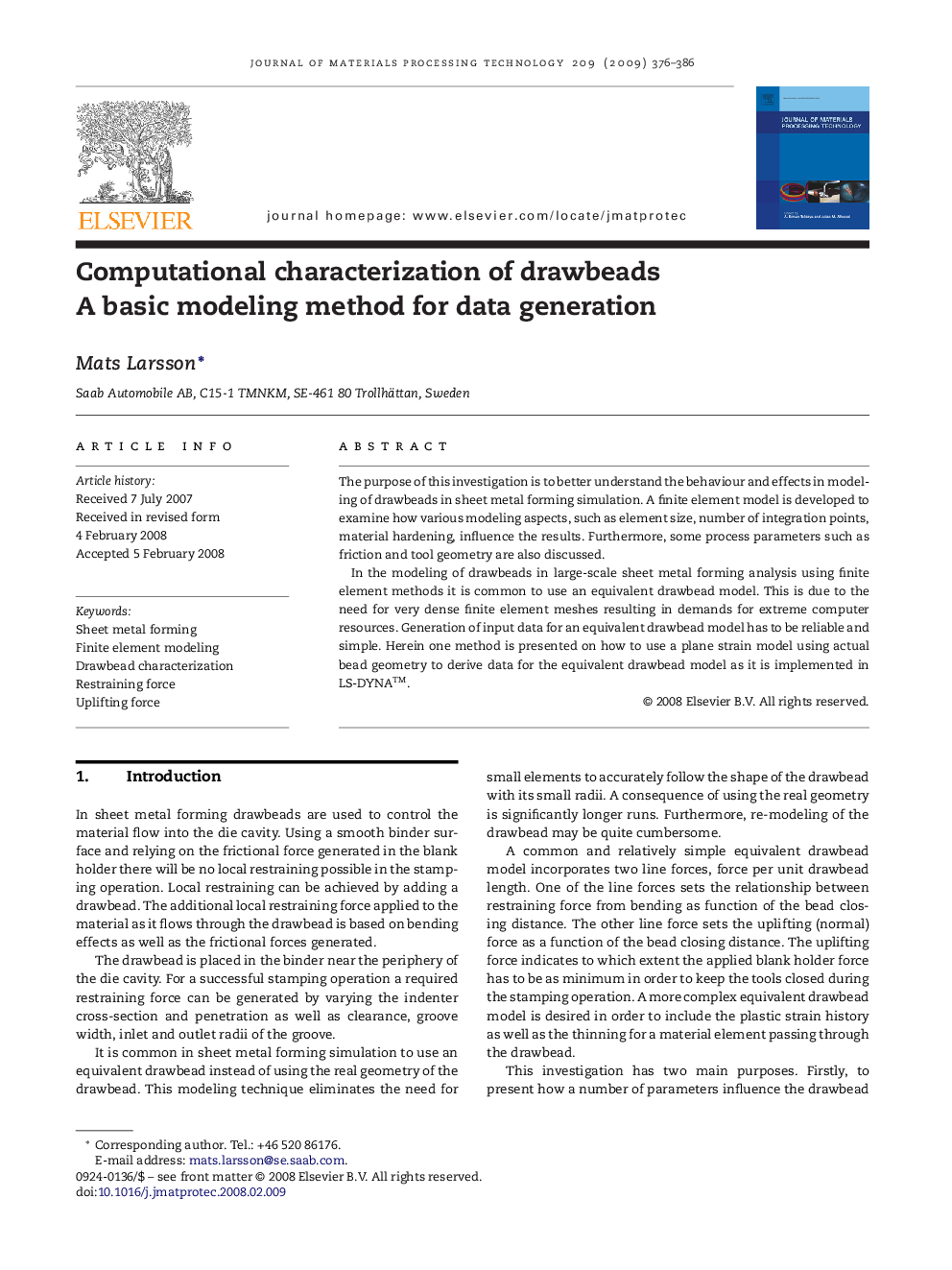| Article ID | Journal | Published Year | Pages | File Type |
|---|---|---|---|---|
| 798664 | Journal of Materials Processing Technology | 2009 | 11 Pages |
The purpose of this investigation is to better understand the behaviour and effects in modeling of drawbeads in sheet metal forming simulation. A finite element model is developed to examine how various modeling aspects, such as element size, number of integration points, material hardening, influence the results. Furthermore, some process parameters such as friction and tool geometry are also discussed.In the modeling of drawbeads in large-scale sheet metal forming analysis using finite element methods it is common to use an equivalent drawbead model. This is due to the need for very dense finite element meshes resulting in demands for extreme computer resources. Generation of input data for an equivalent drawbead model has to be reliable and simple. Herein one method is presented on how to use a plane strain model using actual bead geometry to derive data for the equivalent drawbead model as it is implemented in LS-DYNATM.
